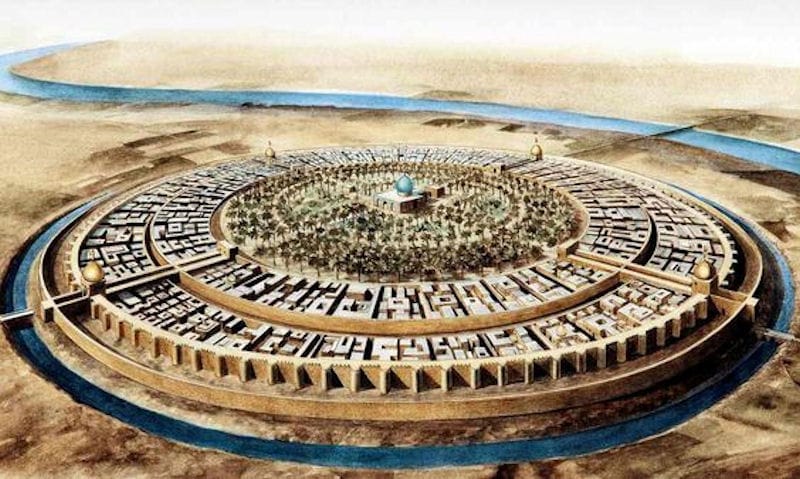The ancient Kingdom of Benin in present-day Nigeria was ahead of its time in many ways. The pre-colonial empire was one of the earliest African kingdoms to establish a successful trade channel with Europeans. And in 1485, when the Portuguese first discovered the empire’s capital, Benin City, they were stunned by its level of development.
The Portuguese ship captain Lourenco Pinto would later remark: ‘Great Benin, where the king resides, is larger than Lisbon; all the streets run straight and as far as the eye can see. The houses are large, especially that of the king, which is richly decorated and has fine columns. The city is wealthy and industrious. It is so well governed that theft is unknown and the people live in such security that they have no doors to their houses.’
Aside from its impressive housing, Benin City was also one of the first cities to have a form of street lighting: tall metal lamps fueled by palm oil. These lamps were especially present near the king’s palace and provided illumination to and from it at night. Additionally, their mastery of art, in the form of bronze and ivory sculpting, was a wonder to behold.
But more than anything, what most defied colonial assumptions about Benin City’s civilization were the Walls of Benin. These walls were at one point four times longer than the Great Wall of China. But what was most remarkable about the Walls of Benin was that they were masterfully constructed before the mechanical era. Known locally as ‘Iya’, these man-made walls were not only defensive structures but also sophisticated tools for urban organization, political control, and cultural identity.
Engineering Without Machines
Construction of the Benin Walls (AKA the Benin Moat) began as early as 800 AD and was completed in the mid-1400s, under the reign of Oba Ewuare the Great. Before Oba Ewuare, Oba Oguola had also played a significant role in fortifying existing structures for the construction of the walls. Years later, Oba Ewuare would then consolidate the moats by adding thoroughfares and fortified gateways.
The base construction technique used was remarkably efficient: workers dug a wide moat or ditch (the ‘Iya’) and used the excavated earth to build outer walls. These outer walls, sometimes reaching up to 20 metres high, were then strengthened with wooden palisades. This created a formidable barrier that was both functional and physically harmonious with its surroundings.
At their greatest extent, these earthworks spanned over 16,000 kilometres, enclosing some 6,500 square kilometres of territory. The walls encircled not just the capital city, Benin City, but hundreds of surrounding villages and farmlands. Their steep earth banks and towering outer walls discouraged invaders from breaching the territory.
The construction of the Walls of Benin required an estimated 150 million man-hours of labour, all done manually by at least a thousand labourers. The scale of the work indicates a high level of social organisation, resource management, and political authority by the Oba and his chiefs. The construction was not uniform; instead, it was a series of interlocking boundaries tailored to local topography and political divisions.
Urban Order and Social Hierarchy
The Walls of Benin were far more than defensive barriers. They structured the physical and social geography of the kingdom. According to ethno-mathematician Ron Eglash, Benin City was laid out using principles of fractal geometry—a design in which each compound reflected the structure of the broader city. Streets were wide and straight, branching out from the Oba’s palace like spokes on a wheel.
The city was zoned with intention. Royalty and nobility occupied the central districts near the palace, while artisans, warriors, and farmers lived in designated quarters further out. The walls and moats served as boundaries between these zones, regulating access and maintaining order. They also helped organise markets, religious sites, and administrative posts.
Political and Spiritual Symbolism
The Iya weren’t merely physical barriers—they were also political and spiritual tools. They symbolised the Oba’s authority, demarcated the sacred from the profane, and marked the territorial extent of the kingdom. In some areas, sections of the walls were associated with specific deities or ancestors and were maintained as sacred sites. Shrines were sometimes embedded within or alongside the walls, blending governance with religion.
Moreover, the walls were a visual declaration of power to outsiders and internal rivals alike. Their scale and permanence testified to the might of the Edo people and the divine legitimacy of their ruler. The very process of building the walls—with collective labour mobilised by royal decree—reinforced loyalty and centralised control.
Collapse and Colonial Catastrophe
The fall of the Benin Walls came not from erosion or neglect, but from fire and iron. In 1897, after a British trading party was ambushed en route to Benin under contested circumstances, the British Empire launched a punitive expedition. Thousands of troops invaded the kingdom, looting the royal palace, seizing thousands of bronze and ivory artworks, and burning much of the city to the ground.
The destruction was methodical. British forces demolished sections of the walls, filled in moats, and repurposed the earth for colonial infrastructure. They dismantled the symbolic and practical foundations of Benin's urban design. The king, Oba Ovonramwen Nogbaisi, was deposed and exiled. The kingdom was formally annexed into the British colony of Southern Nigeria.
This assault not only robbed Benin of its treasures and leadership but also severed the transmission of cultural knowledge about the walls’ construction, maintenance, and meaning. Oral histories survived, but much of the technical expertise was lost or suppressed under colonial rule.
The Walls Today: Fragmented but Alive
More than a century after their partial destruction, remnants of the Benin Walls still dot the landscape. Some survive as deep trenches or raised embankments hidden behind compounds and farmland. Others lie buried beneath modern roads and buildings. A few are still maintained as sacred or historical sites by local communities.
Satellite imagery and archaeological studies have helped reconstruct parts of the original layout. Recent digital mapping projects and cultural preservation efforts have renewed interest in the site. In 1995, UNESCO placed the Benin Earthworks on its tentative list of World Heritage Sites, recognising their global importance.
Yet, despite these efforts, the walls remain under threat. Urban sprawl, erosion, environmental pollution and a general lack of public sensibility continue to endanger what little remains. Calls for proper conservation are growing louder, led by historians, cultural activists and the Benin royal court.
The Legacy of the Walls of Benin
The Walls of Benin force a reconsideration of African pre-colonial history. They challenge colonial-era myths that painted Africa as a continent without architecture, order or political complexity. They testify to the ingenuity of a society that mastered both engineering and symbolism—building not just walls, but a worldview.
Their story is a reminder that African civilisations developed urban planning, social stratification, environmental adaptation, and large-scale infrastructure independent of European influence. And if preserved with care and studied with respect, The Walls of Benin can continue to shape how we understand the vastness and depth of Africa’s historical legacy.

Oyindamola Depo Oyedokun
Oyindamola Depo Oyedokun is an avid reader and lover of knowledge, of most kinds. When she's not reading random stuff on the internet, you'll find her putting pen to paper, or finger to keyboard.
follow me :
Leave a Comment
Sign in or become a Africa Rebirth. Unearthing Africa’s Past. Empowering Its Future member to join the conversation.
Just enter your email below to get a log in link.

